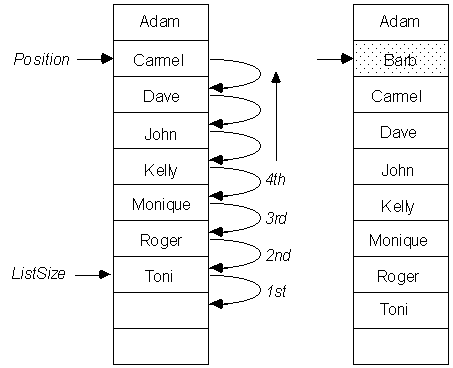Breaking News
Contoh Program Procedure Dan Function Pada Pascal
суббота 02 февраля admin 50
Pascal - Mengenal Procedure dan Function (Langkah 5) Pada artikel Pascal - Pemrograman Mudah Untuk Pemula pernah disinggung mengenai prosedur dan fungsi. Pada artikel itu juga dijelaskan sedikit pemahaman tentang prosedur dan fungsi. Udah lama gk ngelanjutin materi tentang pascal. Saya sekarang akan berbagi mengenai ARRAY SATU DIMENSI. Agar sobat dD semua mudah mengerti kita akan mulai dari sebuah CONTOH PROGRAM.
A, b: integer; c: integer; d, e: string; f: real; g: extended; h, i, j, k: byte; l, m, n, o: byte; Basic numeric types include: longint (32-bit, hardware dependent), integer (16-bit, hardware dependent), shortint (8-bit). Their unsigned counterparts are cardinal (available only in some versions of Pascal), word, byte. Decimal numbers are supported using the real type, and the extended type (available only in some versions of Pascal) Other types include the char (for holding characters), the string (as its name suggests).
(For now, arrays, pointers, types and records will be covered in a later chapter) Functions/Procedures [ ] Before we begin, let us first clarify the key difference between functions and procedures. A procedure is set of instructions to be executed, with no return value. A function is a procedure with a return value.
For readers familiar with C/C++, a procedure is simply a function with a void return value, as in void proc_sayhello(). The definition of function/procedures is thus as such. Function Add ( A, B: Integer ): Integer; Forward; Function Bad ( A, B, C: Integer ): Integer; Begin Bad:= Add ( Add ( A, B ), C ); End; Function Add ( A, B: Integer ): Integer; Begin Add:= A + B; End; In this example, Add is first defined as a function taking two integer variables and returning an integer, but it is defined as a forward definition (prototype), and thus no body is written. Later, we see that Add is defined with a body. Note that the two definitions of Add must be congruent with each other, or the compiler will complain.
From the above example, we can also gather that in Pascal, a function's return value is given by the value of the variable with the function's name (or by the variable named result), when the function returns. As you can see in the Bad function, an undefined variable named 'Bad' has been assigned a value. That is the return value for the Bad function. Similarly, in Add, the variable named 'Add' has been assigned a value, which is its return value. Note that unlike C or other languages, assigning a return value to a function does not return from the function. Thus, the function will continue executing, as in the following example.
Function Weird ( A: Integer ): Integer; Var S: Integer; Begin S:= A / 2; If S = 10 Then Weird:= 0; Weird:= 2; End; If A happens to be 6, the function will not return the expected result of 1 or even 0. Instead, it would return a result of 2, because the function to execute continues even after the return value is set.
In fact, as you would notice, the function would return 2 all the time because it runs all the way to the end, at which the return value is set to 2. To mimic C style function returns, the exit statement must be used. The exit statement in Pascal, unlike C, exits from the current block of code (in this case, the function), and NOT from the program.
The code would then look like this.

Most of the softwares you write need implementing some form of date functions returning current date and time. Dates are so much part of everyday life that it becomes easy to work with them without thinking. Pascal also provides powerful tools for date arithmetic that makes manipulating dates easy.  However, the actual name and workings of these functions are different for different compilers. Getting the Current Date & Time Pascal's TimeToString function gives you the current time in a colon(: ) delimited form. The following example shows how to get the current time − program TimeDemo; uses sysutils; begin writeln ('Current time: ',TimeToStr(Time)); end. When the above code was compiled and executed, it produces the following result − Current time: 18:33:08 The Date function returns the current date in TDateTime format.
However, the actual name and workings of these functions are different for different compilers. Getting the Current Date & Time Pascal's TimeToString function gives you the current time in a colon(: ) delimited form. The following example shows how to get the current time − program TimeDemo; uses sysutils; begin writeln ('Current time: ',TimeToStr(Time)); end. When the above code was compiled and executed, it produces the following result − Current time: 18:33:08 The Date function returns the current date in TDateTime format.
